An Exclusive Interview With Ami Vitale
By Anne Pinto-Rodrigues
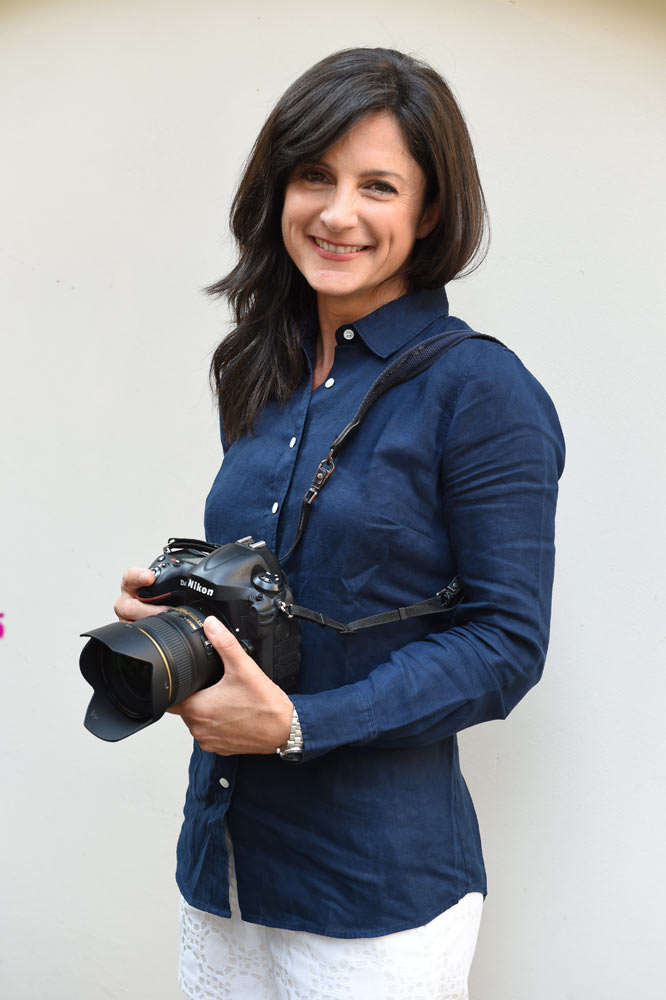
Ami Vitale on Lens Magazine Issue 35 Photography by: Sarah Isaacs, Ami Vitale© All Rights Reserved.
Ami Vitale’s journey as a photographer, writer and filmmaker has taken her to over 90 countries, where she has witnessed civil unrest and violence, but also surreal beauty and the enduring power of the human spirit. She has lived in mud huts and war zones, contracted malaria and donned a panda suit – all in keeping with her philosophy of ‘living the story’. She is an Ambassador for Nikon and a contract photographer with National Geographic magazine. She has garnered prestigious awards including multiple prizes from World Press Photo, the International Photographer of the Year prize, the Daniel Pearl Award for Outstanding Reporting and was named Magazine Photographer of the Year by the National Press Photographers Association, among others. Vitale now comes home to Montana in between making films and shooting stories about the planet’s most pressing issues, including wildlife on the edge of extinction, climate change-precipitated migration, and the struggles and triumphs of the human spirit. She lectures and teaches workshops throughout the Americas, Europe, and Asia, and her work is exhibited in museums, galleries and private collections worldwide. She is a founding member of Ripple Effect Images, a collective of scientists, writers, photographers and filmmakers with the mission of creating powerful stories illustrating the very specific issues women in developing countries face.
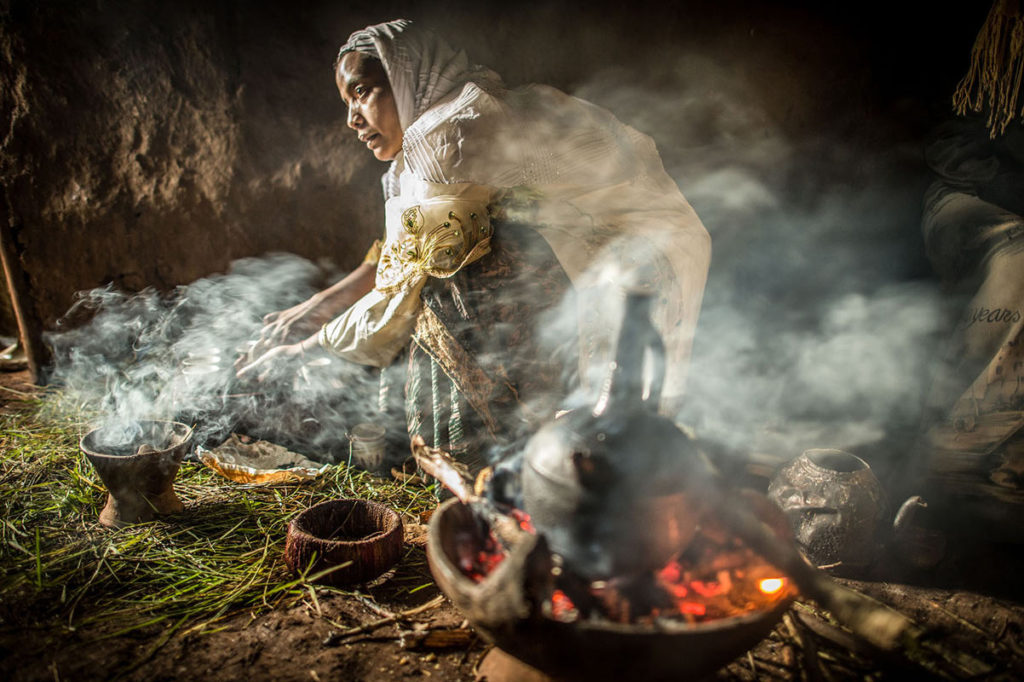
Ramla Sharif roasts coffee inside her home in the village of Choche, Ethiopia. Legend has it that this is the birthplace of coffee. The region is home to the largest pool of genetic diversity of coffee in the world, more than all other coffee-producing countries combined by a huge margin. Copyrights to Ami Vitale © All Rights Reserved.
After more than a decade covering conflict, Vitale couldn’t help but notice that the less sensational – but equally true – stories were often not getting told, like the wedding happening around the corner from the revolution or the triumphs amidst seemingly endless devastation. As a result, she recommitted herself to seek out the stories within and around ‘the story’, and remaining independent, so that she would have the freedom to shoot what she believed deserved to be shared.
Hello Ami! Thank you for agreeing to this interview with Lens Magazine. Please tell us a little bit about yourself and your photography journey.
Growing up, I was very introverted and shy. I found that the camera became my passport to engaging with the world around me. By putting attention on others, it empowered me. What I never imagined was that by empowering myself, I would also be able to amplify voices and stories. Photography became this incredible tool for creating awareness and understanding across cultures and countries, a tool to make sense of our commonalities in the world we share.
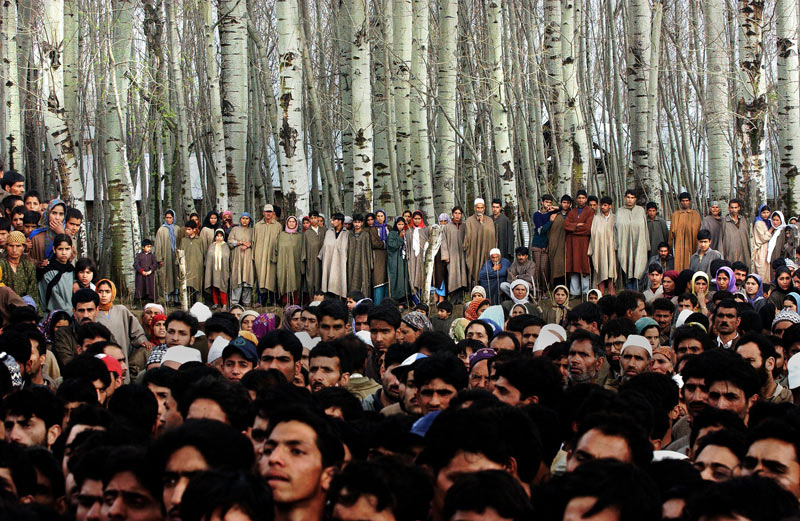
Copyrights to Ami Vitale © All Rights Reserved.
Photography has the ability to create change and remind us of the best of humanity, and what we can achieve. I use photography to focus on what connects us. There is a universal truth that we have more in common than we often realize. And it behooves us as journalists and storytellers to give a broader vision of what the world looks like. Stories of love, courage and those that inspire empathy exist. We must work hard to tell stories with a multitude of narratives. We have become attuned to thinking that the things that give us joy and connect us, the things that everyone can identify with, are not worth publishing and not worth showing. Imagine what would happen if we chose to illuminate the things that unite us as human beings rather than only emphasize our differences?
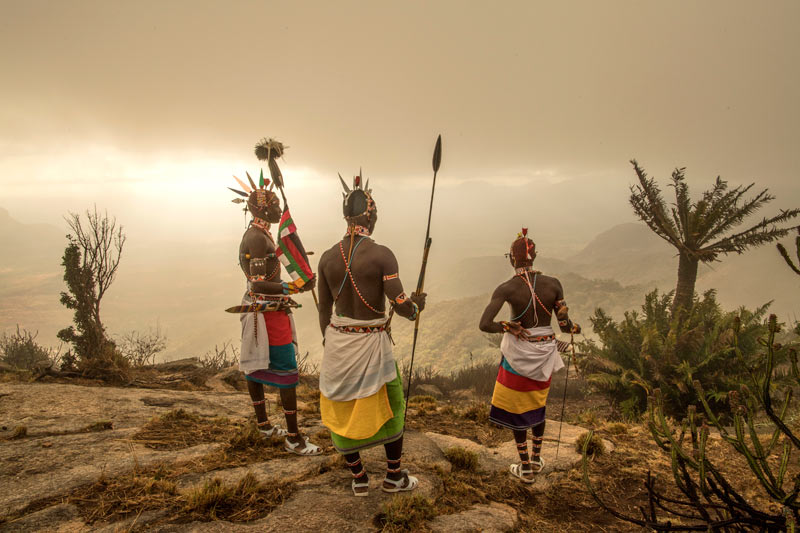
The Guardian Warriors of Northern Kenya Copyrights to Ami Vitale © All Rights Reserved.
In your photography, you focus on the relationship element as much as you do on the technical aspects. Could you elaborate on that?
A lot of my work involves traveling to foreign countries and living in remote places. My job is to become invisible and get close to people and wildlife, so I can bring their stories to life. So whether I’m in my home state of Montana or in a country 5,000 miles away, for me, the intimate moments matter the most.
I’ve realized that if I want to tell a story, it takes time and patience to understand it. I can’t parachute in and hope to do justice to anyone. I have to spend time understanding the complexities. I have to go and live in a place and commit to understanding beyond the headlines.
The easiest way to make compelling, real photographs of people is by being authentic. Making candid images of people is not a trick. It’s a skill a photographer can develop, which requires respect for the subject and building a relationship in the time you have together. Successful pictures of people almost never happen from a distance. You need to become a part of the moment.
My advice to aspiring photographers is to talk to people. It could be a nod of acknowledgment, a greeting, an explanation of what you’re doing, or a long involved conversation – connect with the people you are photographing. Remember, we have more in common with each other than you might think.
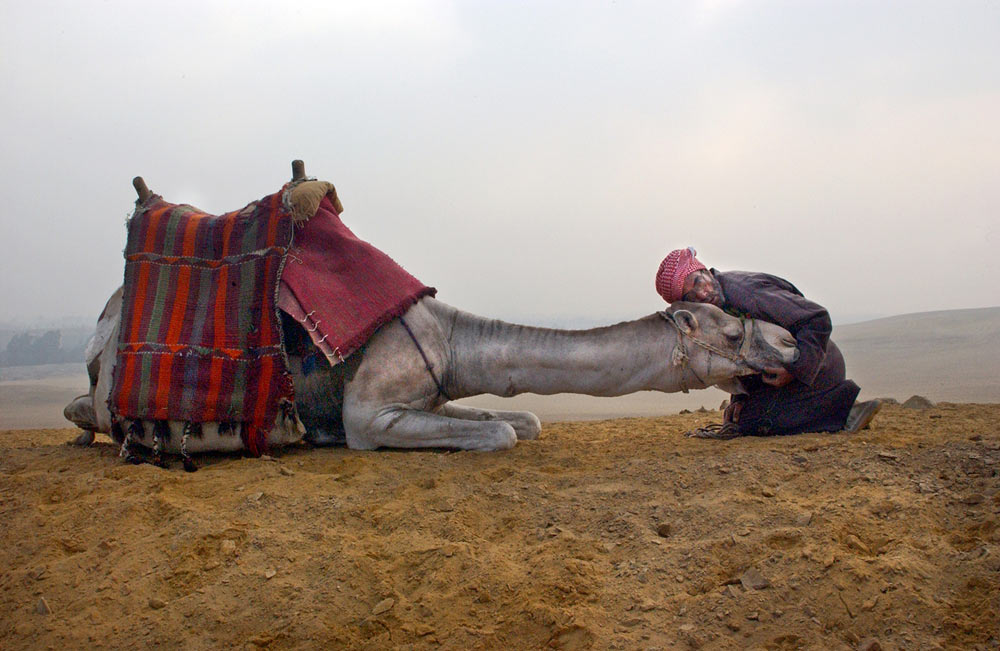
An Egyptian man rests his head on his beloved camel in the desert near Cairo. Climate scientists and geologists have been warning of the danger of saltwater intrusion in Egypt’s Nile Delta for decades. Copyrights to Ami Vitale © All Rights Reserved.
You’ve worked in over 90 countries, documenting both the horrors as well as the triumphs of humanity. What has been the most challenging photo story you’ve worked on to date? Why?
Ironically, one of the more challenging stories was the panda story (http://www.nationalgeographic.com/magazine/2016/08/giant-pandas-wild-animals-national-parks/)
For starters, it was a matter of how could I possibly create something that might surprise our readers. The panda may be the most recognized and the most photographed animal alive on the planet. It is not that anyone hasn’t seen a picture of a panda. We all have. Zoos pay millions for these panda ‘ambassadors’ on loan from China and they never fail to attract a crowd. After going to China multiple times, getting to know the people, getting to understand the pandas and learning to really think like a panda, this story blew my mind.
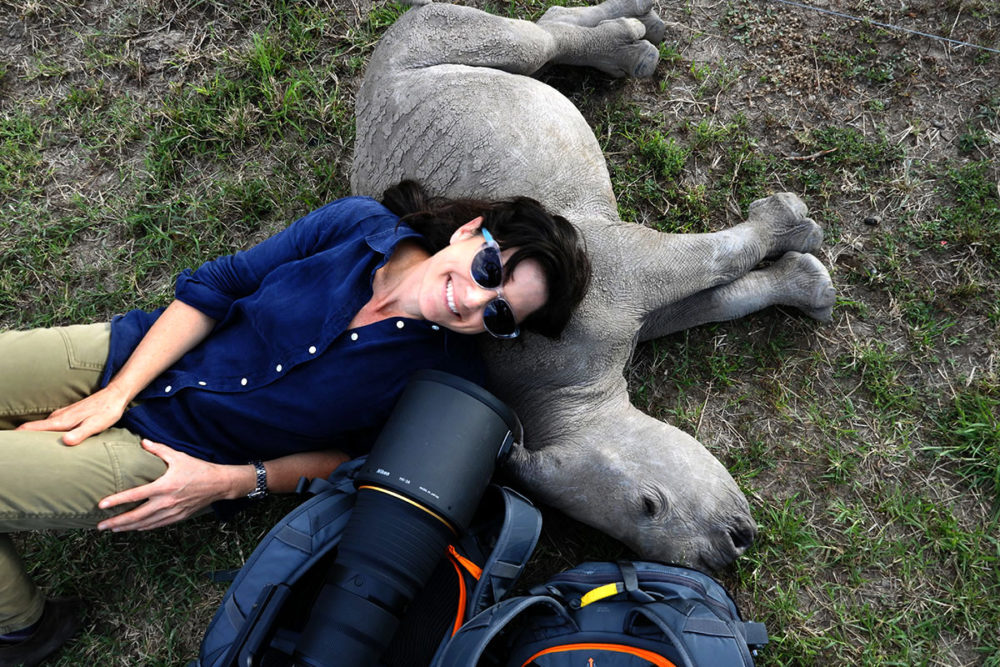
Taking a nap with the sweetest little boy named Ringo, an orphaned baby southern white rhino at the Ol Pejeta Conservancy in Kenya. He was abandoned by his mother shortly after birth and now Ol Pejeta is taking care of him to ensure that he has a long and happy life. Ol Pejeta is East Africa’s Largest Black Rhino Sanctuary and the only place on the planet to see the last three Northern White rhinos. Photography by: Corey Rich Ami Vitale © All Rights Reserved.
Of course, the biggest challenge was getting access to one of the world’s most endangered animals. This is a very rare, finicky endangered animal with teeth and claws. With only a few thousand in the world, the Chinese treat it as a national symbol, and each panda is closely guarded and watched. They are multi–million dollar bears that everyone treats with kid gloves, and they are highly vulnerable. Getting close, without interfering with their biology and conservation, and in a way that is acceptable to its very protective minders, was challenging. It was not just about getting access and gaining local trust, but also about being able to work with a wild animal.
People forget the ‘wild’ in ‘wildlife’. We forget that a giant panda bear is actually a bear. The temptation is to get up close and personal with wild animals but these interactions can have lethal consequences. The most important way to learn about wildlife is to keep your distance and be respectful. I did push the boundaries though on getting close to these animals. I had to be suited up in a panda costume which was scented with panda urine, like the staff, in order to blend in.

